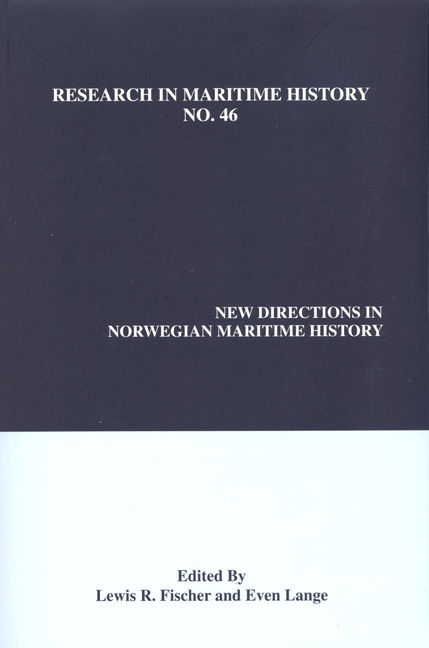Book contents
- Frontmatter
- Contents
- About the Editors
- Contributors' Notes
- Introduction
- Global Integration
- Political Issues
- Success and Failure
- “International Maritime Trade Politics and the Case of Norway, 1948-1990”
- “Inheriting Strategies: Understanding Different Approaches to Shipping during the World War I Boom in Haugesund, Norway”
- “Why Did They Fail? Business Exits among Norwegian Shipping Companies since 1970”
- “Little Man, What Now? Company Deaths in Norwegian Shipping, 1960-1980”
“Little Man, What Now? Company Deaths in Norwegian Shipping, 1960-1980”
from Success and Failure
- Frontmatter
- Contents
- About the Editors
- Contributors' Notes
- Introduction
- Global Integration
- Political Issues
- Success and Failure
- “International Maritime Trade Politics and the Case of Norway, 1948-1990”
- “Inheriting Strategies: Understanding Different Approaches to Shipping during the World War I Boom in Haugesund, Norway”
- “Why Did They Fail? Business Exits among Norwegian Shipping Companies since 1970”
- “Little Man, What Now? Company Deaths in Norwegian Shipping, 1960-1980”
Summary
Introduction
The period from 1960 until the early 1970s is usually regarded as a prosperous period for shipping. Demand for seaborne transport increased rapidly, and massive investments led to growth and modernization in the world fleet. Larger vessels and new ship types invaded the markets traditionally served by general cargo vessels. Since the Norwegian shipping industry maintained its significant role in the international market through strategies based upon specialization and economies of scale, the period can be considered beneficial for it. Nevertheless, within the context of strong demand growth and new technological solutions, a substantial number of Norwegian shipping companies went out of business by failing to cope with the new opportunities. What factors can explain this apparent paradox?
The analysis in this paper is based on the 1960 population of Norwegian shipping companies. Information about the size, geographical location and business strategies of the companies is linked to how the companies performed in the years from 1960 to 1980, with particular attention to whether they “survived” or “died” during this period. The results show that the fates of the companies in these two decades were closely related to their positions in 1960 and that the role of company size was of particular significance. In the prosperous period from 1960 to 1973, more than half of the smallest companies disappeared. The casualties continued after the market collapsed, but by then even some of the larger companies began to fail as well.
The essay analyzes the basis for the reduction in the 1960 stock of Norwegian shipping companies, distinguishing between two periods characterized by radically different market conditions. The hypothesis is that the small companies which disappeared before 1973 became victims of the improved productivity of their competitors. By and large, the problems the small companies faced were a result of the booming market, which enabled financially stronger rivals to invest in superior tonnage to replace their own older, smaller and less-advanced vessels. The high cost of acquiring the new technology needed to remain competitive meant that smaller shipping companies were unable to renew their productive capital. During the 1960s, owners who refrained from investing in competitive capacity – for financial or other reasons – rapidly disappeared.
- Type
- Chapter
- Information
- New Directions in Norwegian Maritime History , pp. 233 - 252Publisher: Liverpool University PressPrint publication year: 2011



